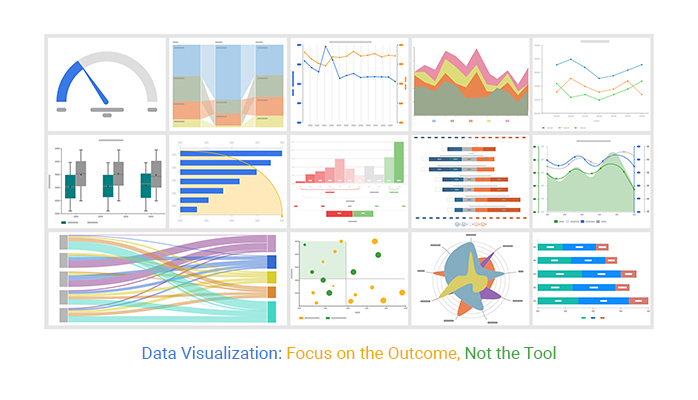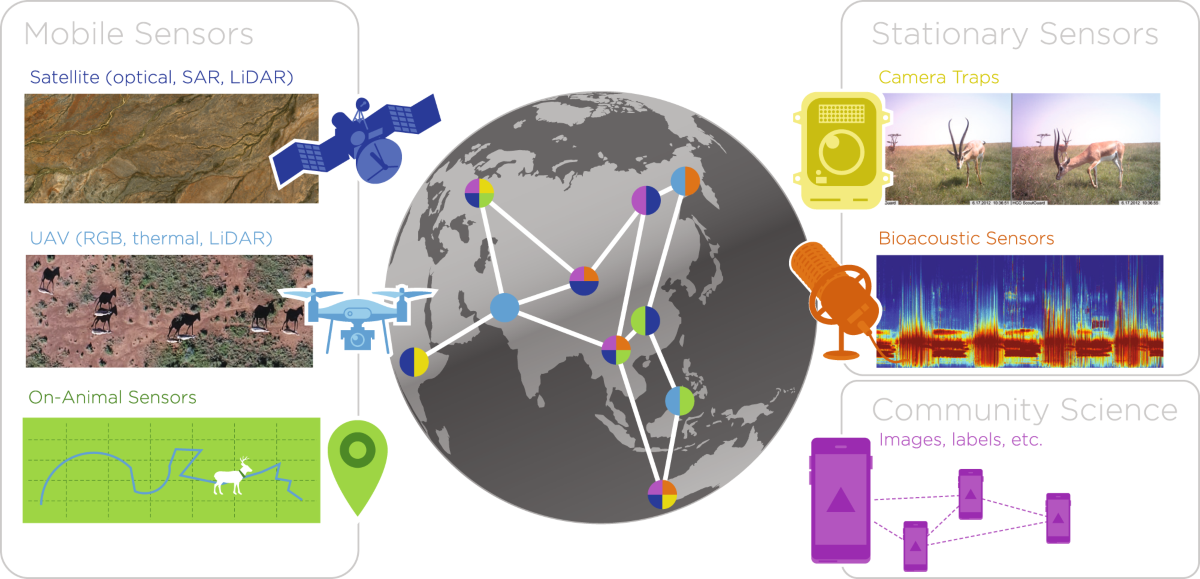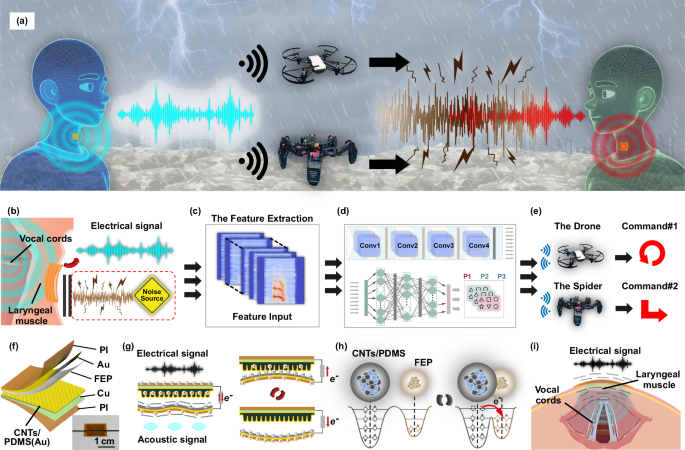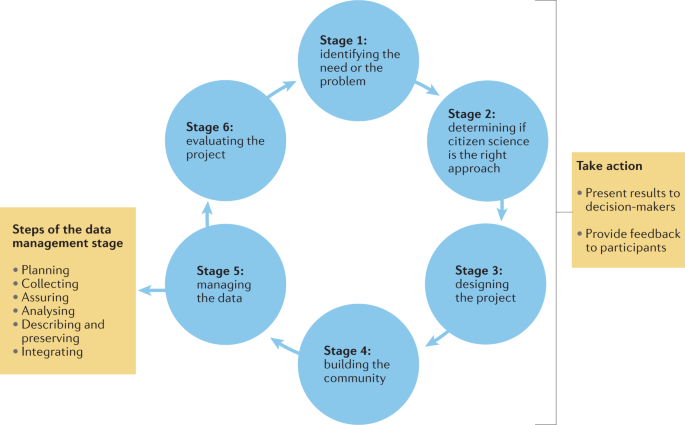How Acoustic Monitoring is Transforming Wildlife Conservation
From Sound to Visual Insights
I've spent years researching how innovative technologies are changing the way we understand and protect our natural world. In this article, I'll explore how acoustic monitoring has evolved from simple recording devices to sophisticated AI-powered systems that translate sound into powerful visual insights for conservation.
The Evolution of Wildlife Monitoring Technologies
When I first started in wildlife conservation, tracking elusive species meant trudging through difficult terrain, setting camera traps, or relying on physical evidence like tracks and scat. These traditional methods, while valuable, have significant limitations – they're labor-intensive, often invasive, and frequently miss nocturnal or shy species that actively avoid human presence.

The emergence of acoustic monitoring has revolutionized our approach. Rather than attempting to visually capture or physically track animals, we now listen for their presence. This non-invasive technique allows us to detect species without disturbing their natural behaviors or habitats.
I've witnessed the remarkable evolution of these sound-based technologies over the past decade. What began as simple field recordings analyzed manually by experts has transformed into sophisticated systems powered by artificial intelligence. Modern acoustic monitoring platforms can now:
- Automatically identify hundreds of different species by their unique vocalizations
- Filter out background noise and focus on signals of interest
- Monitor continuously for months or even years in remote locations
- Transmit data wirelessly to central analysis stations
Perhaps most importantly, we've seen a profound shift from purely audio data to integrated visual representations of acoustic information. This transition has democratized access to acoustic insights, making them comprehensible to non-specialists and dramatically increasing their utility for conservation decision-making.
Today, I can show a policymaker or community leader a visual representation of how biodiversity has changed in their region over time – all derived from sound recordings. This ability to Interactive Voice Response data into compelling visuals has been transformative for conservation advocacy.
The Science Behind Acoustic Monitoring Systems
At their core, passive acoustic monitoring (PAM) systems consist of microphones or hydrophones (for underwater applications) connected to recording devices that capture sounds in natural environments. These systems can be programmed to record continuously or on schedules that align with peak activity periods for target species.
The technological breakthroughs enabling this acoustic revolution include:
Key Technologies in Acoustic Monitoring
flowchart TD
A[Raw Audio Capture] -->|Digital Signal Processing| B[Sound Filtering]
B --> C[Feature Extraction]
C --> D[Machine Learning Classification]
D --> E[Species Identification]
D --> F[Behavior Analysis]
D --> G[Population Density Estimation]
style A fill:#e6f7ff,stroke:#0099cc
style B fill:#e6f7ff,stroke:#0099cc
style C fill:#e6f7ff,stroke:#0099cc
style D fill:#ffcccc,stroke:#ff8080
style E fill:#d6f5d6,stroke:#5cd65c
style F fill:#d6f5d6,stroke:#5cd65c
style G fill:#d6f5d6,stroke:#5cd65c
Different species produce distinct acoustic signatures that serve as audio fingerprints. These can include:
- Frequency range - The pitch of sounds, measured in Hertz (Hz)
- Temporal patterns - How sounds are organized over time
- Amplitude - The loudness or intensity of vocalizations
- Harmonic structure - The presence of overtones and their relationships
One of the most powerful transformations in this field has been the conversion of raw sound data into spectrograms – visual representations that display frequency on the vertical axis and time on the horizontal axis, with color or brightness indicating amplitude. This visualization technique allows researchers to literally see patterns in sound data that would be difficult to detect through listening alone.

Advanced acoustic fingerprinting techniques now allow for automated species identification with remarkable accuracy. These systems compare incoming audio against vast libraries of known vocalizations, accounting for variations in individual calls, regional dialects, and environmental conditions.
My work with these technologies has shown that even subtle differences in acoustic signatures can reveal important information about animal health, behavior, and population dynamics – insights that would be nearly impossible to gather using traditional observation methods alone.
Visualizing the Invisible: Turning Sound Data into Conservation Insights
The true power of acoustic monitoring emerges when we transform invisible sound waves into visual insights that can guide conservation decisions. I've found that PageOn.ai's AI Blocks feature is particularly effective for this purpose, allowing us to create modular visual components that represent different aspects of acoustic data.

One of the most impactful visualization approaches I've implemented is the creation of comprehensive soundscape maps. These spatial representations overlay acoustic data onto geographic maps, creating a visual portrait of an ecosystem's sonic landscape.
Species Detection by Habitat Type
Acoustic monitoring reveals how different habitat types support varying levels of biodiversity:
Visual tracking of species movements has been another breakthrough application. By analyzing the timing and location of acoustic signals, we can create movement maps that show how animals traverse landscapes over time. This approach is particularly valuable for studying migratory species or understanding how animals respond to seasonal changes in resource availability.
Temporal visualization techniques allow us to show changes in biodiversity over extended periods. I've used these tools to create compelling before-and-after comparisons following conservation interventions, making the impact of our work immediately apparent to stakeholders.
From Sound to Visual Insight Process
flowchart LR
A[Raw Audio Collection] --> B[Sound Processing]
B --> C[Feature Extraction]
C --> D[Visual Transformation]
D --> E1[Spectrograms]
D --> E2[Heatmaps]
D --> E3[Network Graphs]
D --> E4[Geographic Overlays]
E1 & E2 & E3 & E4 --> F[Conservation Insights]
style A fill:#f9d5e5,stroke:#eeeeee
style B fill:#eeeeee,stroke:#999999
style C fill:#eeeeee,stroke:#999999
style D fill:#eeeeee,stroke:#999999
style E1 fill:#d5f9e7,stroke:#eeeeee
style E2 fill:#d5f9e7,stroke:#eeeeee
style E3 fill:#d5f9e7,stroke:#eeeeee
style E4 fill:#d5f9e7,stroke:#eeeeee
style F fill:#e7d5f9,stroke:#eeeeee
Perhaps most importantly, these visual representations make acoustic data accessible to non-technical stakeholders. When I present to community groups or policymakers, I find that intuitive visual formats dramatically increase engagement and understanding. A colorful heatmap showing biodiversity hotspots derived from acoustic data can communicate complex ecological relationships more effectively than pages of technical analysis.
By transforming the invisible world of sound into compelling visual stories, we're able to build broader support for conservation initiatives and help diverse stakeholders understand the value of protecting acoustic diversity in our natural landscapes.
Real-World Applications and Success Stories
I've had the privilege of working with and observing numerous acoustic monitoring projects that demonstrate the real-world impact of this technology. One particularly successful application has been tracking elusive nocturnal species in dense forest environments, where traditional visual monitoring methods are severely limited.

In one project focusing on endangered owl species, acoustic monitors deployed across a 10,000-hectare forest revealed previously unknown nesting sites and hunting territories. The resulting conservation plan protected critical habitat areas that would have been missed using conventional survey methods.
Marine conservation has seen some of the most dramatic benefits from acoustic monitoring technologies. Underwater environments present unique challenges for traditional observation, but sound travels efficiently through water, making acoustic approaches particularly effective.
Detection Range Comparison by Monitoring Method
Acoustic monitoring significantly outperforms visual methods in many environments:
The Sinay AI approach to acoustic monitoring has been particularly impressive, implementing real-time tracking and enhanced data analysis for endangered marine species. Their system can detect the presence of protected whale species and automatically alert shipping vessels to reduce speeds or alter course, dramatically reducing the risk of deadly collisions.
Another innovative application comes from Synature, whose work in Glaris canton, France, and South Africa has focused not only on conservation outcomes but also on engaging the public through acoustic monitoring. Their systems provide an "acoustically engaging way to get people interested in nature," creating emotional connections that foster conservation support.
Urban wildlife monitoring represents an emerging frontier for acoustic technologies. I've been involved in projects that use acoustic sensors to track how species adapt to human-dominated landscapes, revealing surprising biodiversity in even heavily developed areas. These insights help urban planners create more wildlife-friendly cities by identifying and preserving acoustic corridors that enable animal movement through urban environments.
By capturing and analyzing the sounds of our natural world, these projects are providing unprecedented insights into species distributions, behaviors, and conservation needs – often at scales that would be impossible to achieve using traditional monitoring approaches.
Integrating Acoustic Data with Other Conservation Technologies
While acoustic monitoring provides powerful insights on its own, I've found that its value multiplies exponentially when integrated with other conservation technologies and data sources. This multi-dimensional approach creates a more complete picture of ecosystem health and wildlife populations.

Combining acoustic with visual monitoring creates particularly robust datasets. For example, when working in tropical forest ecosystems, I've used camera traps to verify species identified through acoustic signatures, while the acoustic data fills in crucial gaps by detecting species that rarely trigger cameras.
PageOn.ai's Deep Search functionality has proven invaluable for integrating contextual data with acoustic findings. This tool allows us to automatically connect acoustic detections with relevant research papers, habitat information, and conservation status updates – creating a knowledge network that enhances our understanding of detected species.
Integrated Conservation Data Framework
flowchart TD
A[Acoustic Data] --> F[Integrated Analysis]
B[Visual/Camera Data] --> F
C[Environmental Sensors] --> F
D[Satellite Imagery] --> F
E[Citizen Science Reports] --> F
F --> G[Conservation Dashboard]
G --> H1[Species Distribution Maps]
G --> H2[Threat Analysis]
G --> H3[Intervention Prioritization]
G --> H4[Effectiveness Monitoring]
style A fill:#FF8000,stroke:#eeeeee,color:#ffffff
style B fill:#42A5F5,stroke:#eeeeee
style C fill:#66BB6A,stroke:#eeeeee
style D fill:#EC407A,stroke:#eeeeee
style E fill:#AB47BC,stroke:#eeeeee
style F fill:#78909C,stroke:#eeeeee
style G fill:#5D4037,stroke:#eeeeee,color:#ffffff
style H1 fill:#26A69A,stroke:#eeeeee
style H2 fill:#26A69A,stroke:#eeeeee
style H3 fill:#26A69A,stroke:#eeeeee
style H4 fill:#26A69A,stroke:#eeeeee
Environmental factors have profound effects on acoustic landscapes. In my research, I've documented how weather patterns, seasonal changes, and human activities create distinct acoustic signatures that must be understood to properly interpret wildlife sound data. By correlating acoustic recordings with meteorological data, we can filter out confounding variables and focus on meaningful biological signals.
The relationship between habitat quality and acoustic diversity is particularly fascinating. My team has found that aquatic ecosystem visual vibes answer key indicators often correlate strongly with acoustic measurements, providing multiple lines of evidence for ecosystem health assessments.
Building comprehensive conservation dashboards that incorporate multiple data sources represents the frontier of this field. These visual interfaces allow conservation managers to simultaneously monitor acoustic diversity, habitat quality, human pressures, and intervention outcomes – creating a holistic view that supports more effective decision-making.
The future of conservation technology lies not in siloed approaches but in thoughtful integration of complementary methods. By combining acoustic insights with other data streams, we create monitoring systems greater than the sum of their parts.
Challenges and Solutions in Acoustic Monitoring
Despite its tremendous potential, acoustic monitoring faces several significant challenges that must be addressed to maximize its conservation impact. Through my work in this field, I've encountered and developed solutions for many of these obstacles.

One of the most persistent technical challenges is filtering background noise and distinguishing between acoustically similar species. In rainforest environments, for example, the cacophony of sounds can make isolating individual species calls extremely difficult. Advanced signal processing techniques and machine learning algorithms are making significant progress in addressing this challenge.
Acoustic Monitoring Challenges and Solutions
Data management presents another significant hurdle. Continuous acoustic monitoring generates enormous volumes of data – a single monitoring station can produce terabytes over the course of a year. Storing, processing, and analyzing this information requires sophisticated infrastructure and efficient algorithms.
I've found PageOn.ai's Agentic capabilities particularly useful for addressing this challenge. By deploying intelligent agents that can autonomously scan through massive acoustic datasets, identify patterns of interest, and flag unusual events, we dramatically reduce the human labor required for analysis while improving detection accuracy.
Standardization efforts represent another important area of progress. As a member of working groups developing shared protocols for acoustic monitoring, I've seen how establishing common methodologies enhances data comparability across projects and regions. These standards are crucial for building global understanding of acoustic biodiversity patterns.
Cost remains a significant barrier to widespread implementation, particularly in resource-limited conservation areas. However, recent innovations in low-cost, open-source acoustic monitoring technologies are democratizing access to these tools. Projects like AudioMoth have created affordable devices that deliver professional-quality recordings at a fraction of the cost of traditional systems.
The most promising solutions combine technological innovation with practical field knowledge. By bringing together computer scientists, conservation biologists, and local stakeholders, we're developing acoustic monitoring approaches that are both technically sophisticated and grounded in real-world conservation needs.
The Future of Acoustic Monitoring in Conservation
As I look toward the horizon of acoustic monitoring technologies, I see several exciting developments that promise to further revolutionize wildlife conservation. The convergence of miniaturization, energy efficiency, and remote deployment capabilities is creating unprecedented opportunities for large-scale acoustic monitoring networks.

Next-generation devices the size of a coin are being developed that can operate for years on solar power or even harvest energy from environmental vibrations. These miniaturized monitors can be deployed in vast numbers across landscapes, creating acoustic sensing networks of unprecedented density and coverage.
Real-time monitoring networks represent another frontier with tremendous conservation potential. By connecting acoustic sensors to cellular or satellite networks, we can create early warning systems that alert conservation teams to potential threats – from gunshots indicating poaching activity to the sounds of illegal logging operations.
Future Acoustic Monitoring Network
flowchart TD
subgraph "Field Deployment"
A1[Acoustic Sensor 1] --> B[Local Processing Hub]
A2[Acoustic Sensor 2] --> B
A3[Acoustic Sensor 3] --> B
A4[Acoustic Sensor 4] --> B
end
B -.-> C[Satellite/Cellular Transmission]
C --> D[Cloud Processing]
D --> E1[Real-time Alerts]
D --> E2[Conservation Dashboard]
D --> E3[Research Database]
D --> E4[Public Engagement Portal]
style A1 fill:#66BB6A,stroke:#eeeeee
style A2 fill:#66BB6A,stroke:#eeeeee
style A3 fill:#66BB6A,stroke:#eeeeee
style A4 fill:#66BB6A,stroke:#eeeeee
style B fill:#42A5F5,stroke:#eeeeee
style C fill:#AB47BC,stroke:#eeeeee
style D fill:#FF8000,stroke:#eeeeee
style E1 fill:#EC407A,stroke:#eeeeee
style E2 fill:#EC407A,stroke:#eeeeee
style E3 fill:#EC407A,stroke:#eeeeee
style E4 fill:#EC407A,stroke:#eeeeee
Citizen science represents another exciting frontier for acoustic monitoring. User-friendly mobile applications now allow anyone with a smartphone to record and contribute wildlife sounds to global databases. These platforms use AI to help users identify species, while aggregating the collected data to create community-powered maps of biodiversity.
The ability to record audio on Google Docs presentation and other accessible platforms is further democratizing acoustic data collection and sharing, making it easier for conservation organizations to collaborate across geographic boundaries.
Predictive conservation represents perhaps the most transformative application of acoustic monitoring on the horizon. By analyzing long-term acoustic datasets, we can identify subtle changes in ecosystem soundscapes that precede more visible ecological shifts. These early warning signals allow for proactive conservation interventions before critical thresholds are crossed.
I'm particularly excited about the role PageOn.ai can play in helping conservation organizations translate complex acoustic findings into compelling visual stories. As we collect ever more sophisticated acoustic data, the ability to communicate these insights effectively to stakeholders, donors, and the public becomes increasingly critical.
By combining cutting-edge technology with innovative visualization approaches, we're entering an era where the sounds of our natural world can inform and inspire conservation action at unprecedented scales.
From Data to Action: Transforming Acoustic Insights into Conservation Policy
The ultimate value of acoustic monitoring lies not in the data itself, but in how that data drives concrete conservation actions. Throughout my career, I've focused on bridging the gap between technical acoustic insights and practical policy outcomes.

Creating visual evidence for policymakers has proven particularly effective. When I present before legislative committees or regulatory agencies, I've found that acoustic visualizations can communicate ecological relationships more powerfully than traditional scientific presentations. A time-lapse visualization showing the acoustic deterioration of a forest following fragmentation makes an immediate, intuitive impact that statistics alone cannot achieve.
Measuring the effectiveness of conservation interventions represents another crucial application of acoustic monitoring. By comparing soundscapes before and after habitat restoration, protected area establishment, or anti-poaching initiatives, we can provide objective evidence of conservation outcomes. These acoustic assessments help justify continued funding and support for successful programs.
Conservation Impact on Acoustic Biodiversity
Acoustic monitoring reveals the effectiveness of different conservation strategies:
Developing conservation priority areas based on acoustic biodiversity hotspots has emerged as a powerful planning tool. By identifying regions with exceptional acoustic diversity or rare acoustic signatures, we can guide limited conservation resources toward the areas where they'll have the greatest impact.
Building public support through engaging acoustic-visual presentations has been critical for many of the projects I've supported. When community members can literally see and hear the biodiversity in their local ecosystems, they develop stronger emotional connections to conservation goals. This approach has been particularly effective in biology research topics focused on community conservation.
International collaboration represents a final frontier for acoustic monitoring policy applications. As we develop standardized approaches that can be applied across political boundaries, we create opportunities for transnational conservation planning based on shared acoustic data. These collaborative frameworks are especially important for protecting migratory species whose movements span multiple countries.
The journey from acoustic data to conservation action requires not just technical expertise but also communication skills, policy understanding, and stakeholder engagement. By bridging these domains, we can ensure that the revolutionary insights from acoustic monitoring translate into meaningful protection for our planet's biodiversity.
Transform Your Conservation Insights with PageOn.ai
Ready to convert complex acoustic monitoring data into powerful visual stories that drive conservation action? PageOn.ai provides the tools you need to create compelling visualizations, integrate multiple data sources, and communicate your findings to stakeholders, policymakers, and the public.
Conclusion: The Sound of Conservation Success
As we've explored throughout this article, acoustic monitoring has truly revolutionized wildlife conservation by allowing us to detect, track, and understand species in ways previously impossible. The transformation of invisible sound data into powerful visual insights has democratized access to this information, making it actionable for conservation decision-makers at all levels.
The integration of acoustic monitoring with other conservation technologies creates multi-dimensional understanding of ecosystems, while advances in miniaturization, energy efficiency, and AI analysis continue to expand the scope and impact of these approaches.
While challenges remain in data management, standardization, and accessibility, innovative solutions are rapidly emerging. The future promises even more sophisticated acoustic monitoring networks that can provide real-time insights and early warnings of conservation threats.
Perhaps most importantly, acoustic monitoring connects people with nature in new and meaningful ways. There's something profoundly moving about hearing the voice of an endangered species or the rich acoustic tapestry of a healthy ecosystem. These emotional connections, enhanced through thoughtful visualization, build the public and political will necessary for effective conservation action.
As we face unprecedented biodiversity challenges, acoustic monitoring stands as a powerful tool in our conservation arsenal – allowing us to listen to the natural world and respond with informed, effective protection measures. By continuing to innovate in how we capture, analyze, and visualize acoustic data, we can ensure that the symphony of nature continues for generations to come.
You Might Also Like
How 85% of Marketers Transform Content Strategy with AI Visual Tools | PageOn.ai
Discover how 85% of marketers are revolutionizing content strategy with AI tools, saving 3 hours per piece while improving quality and output by 82%.
Visualizing the AI Revolution: From AlphaGo to AGI Through Key Visual Milestones
Explore the visual journey of AI evolution from AlphaGo to AGI through compelling timelines, infographics and interactive visualizations that map key breakthroughs in artificial intelligence.
Unleashing the Power of Agentic Workflows: Visual Clarity for Complex AI Processes
Discover how to transform complex agentic workflows into clear visual representations. Learn to design, implement and optimize AI agent processes with PageOn's visualization tools.
Transform Your AI Results by Mastering the Art of Thinking in Prompts | Strategic AI Communication
Master the strategic mindset that transforms AI interactions from fuzzy requests to crystal-clear outputs. Learn professional prompt engineering techniques that save 20+ hours weekly.
